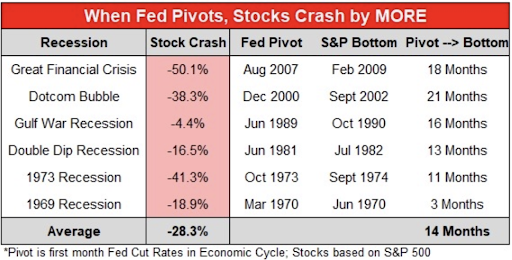Dear Reader,
The best long-term, value investment strategy.
The stuff so boring that people stop reading. The stuff that makes their eyes glaze over.
It’s BORING to buy the stuff we need in this world, right?
Energy, food, housing, airlines? Defense?
Well, if it’s boring, don’t read what I’m about to tell you – because this is also the best investment strategy in the market. And that’s not me saying this. It’s been confirmed by academics. You know… the people who look at data all day and can tell us that one number is higher than the other (great work, guys).
How do we do it?
Mister Piotroski Meets Mister Graham
Joseph Piotroski is an accounting professor at Stanford University. Before that, he taught at the University of Chicago.
He created something called the F score. This is a nine-point score that analyzes the health and strength of a company’s balance sheet. If the company meets the following criteria, it receives a point for each. A “9” is a perfect score.
- Positive Net Income
- Positive return on assets in the current year
- Positive operating cash flow in the current year
- Cash flow from operations being greater than net Income
- Lower ratio of long-term debt in the current period, compared to the previous year
- Higher current ratio this year compared to the previous year
- No new shares were issued in the last year
- A higher gross margin compared to the previous year
- A higher asset turnover ratio compared to the previous year
A company with a 9 out of 9 has an executive board that is extremely shareholder friendly and interested in boosting shareholder value.
Meanwhile, Ben Graham is the godfather of value investing. He’s the man who influenced some of the world’s best long-term investors: Warren Buffett, Charlie Munger… and David Dodd (who worked with Graham at Columbia Business School).
Graham and Dodd identified one anomaly that can’t be arbitraged away – regardless of how many machines trade in this market…
“Value.”
Value investing is about deriving the “intrinsic value” of a company’s stock independent of the actual company’s price.
Buffett has said that “price is what you pay… and value is what you get.” To know the real value, one must analyze a company’s assets, earnings, and dividend payouts independent of whatever the stock trades for today.
Graham developed something called the Graham number. This figure calculates a stock’s underlying value by analyzing a company’s earnings per share (EPS) and book value per share (BVPS).
By default, it creates an upside number that a shareholder should be willing to pay as a defensive investment. Stocks trading at deep discounts to this number can be a unique value. But it’s not enough by itself.
In 1987, Warren Buffett wrote something that altered my thinking about the markets. In a letter to shareholders, he said, “We are quite content to hold any security indefinitely, so long as the prospective return on equity capital of the underlying business is satisfactory, management is competent and honest, and the market does not overvalue the business.”
Here we find the importance of Piotroski whose accounting analysis shows us the importance of competent management and an improving return on equity capital.
And we see the importance of Graham and Dodd’s analysis to help us recognize if the market is over or under-valuing a stock.
Mister Graham, Do Your Dance
Back in 2016, two academics released a study that said, “fundamental signals derived from financial statements allow for future abnormal stock returns.”
The article was called “Separating winners from losers: Composite indicators based on fundamentals in the European context.” The authors are Borja Amor-Tapia and Maria T. Tascón from the Universidad de León.
What did it uncover? I’ll cut to the chase…
You want to buy stocks with strong F scores, cheap Price-to-Graham numbers, and it can’t hurt if there is a low price-to-tangible book value. That’s you best long-term investing strategy right there.
What this offers are stocks with a very nice floor, and have immense upside.
You’d likely be surprised that the stocks on this list include housing, energy, mining, and shipping. But then you’d know that everyone is hyper-worried around a recession.
These companies are incentivizing their shareholders to stick around – F scores are strong. Balance sheets are strong. Debt is low. If we look at the Altman Z Scores of these stocks, they are commonly healthy.
And these stocks are at the core of our Tactical Wealth Investor letter.
To your wealth,
Garrett Baldwin
P.S. Please let me know if you have any feedback, questions about today’s issue or anything else. Just email us at hubfeedback@wealthpress.com.
*This is for informational and educational purposes only. There is an inherent risk in trading, so trade at your own risk.
Market Momentum is Green
Momentum remains positive, and Microsoft reversed sharply after a morning selloff. This market is funny, as reversion has grown more and more likely from morning dips. In addition, the markets are celebrating the fact that monetary policy is losing a battle against fiscal policy as more stimulus money enters the system. You can’t make this stuff up.




